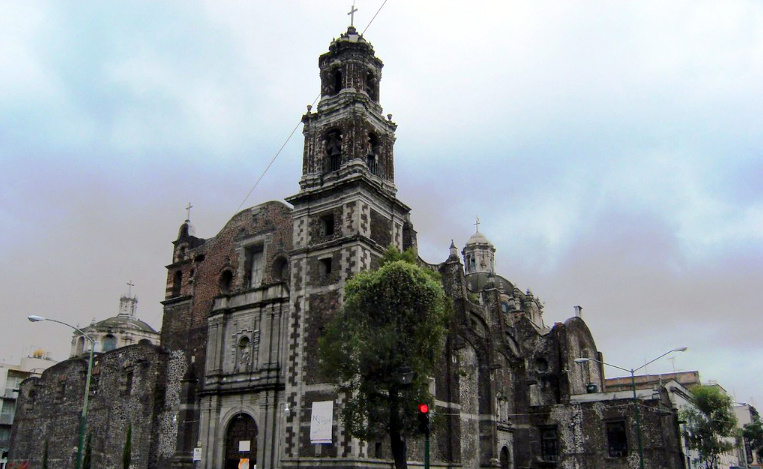
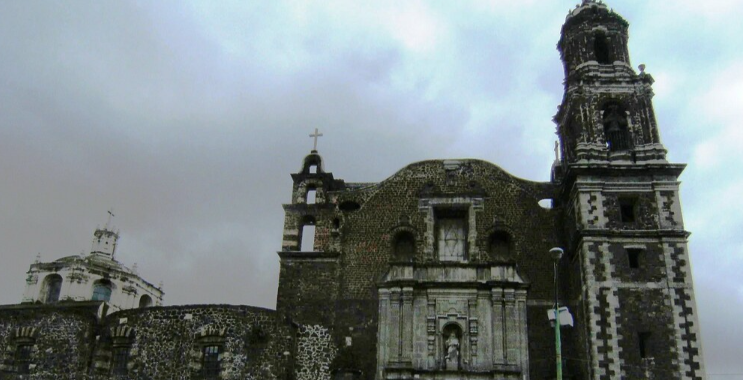
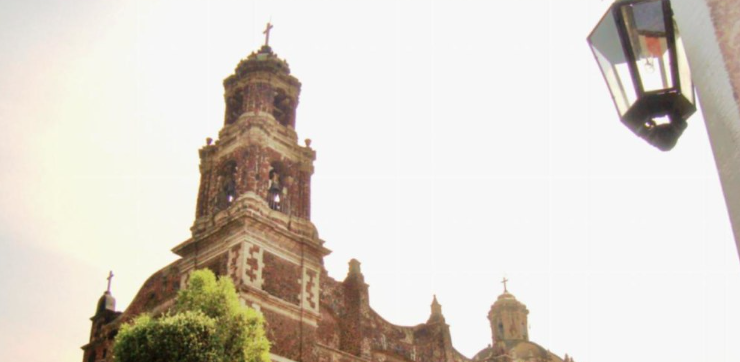
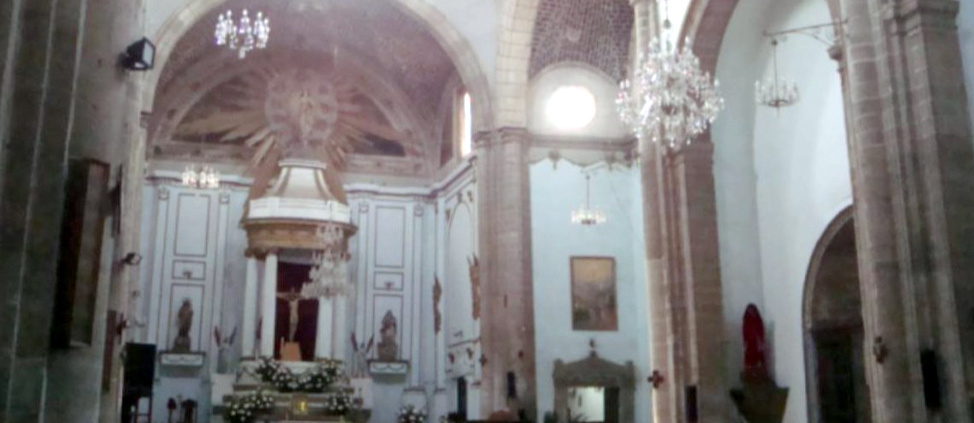
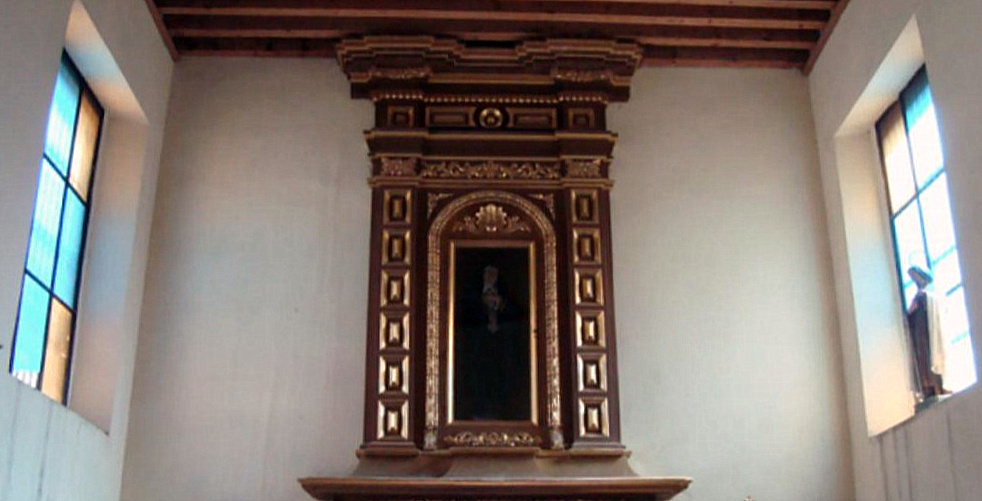
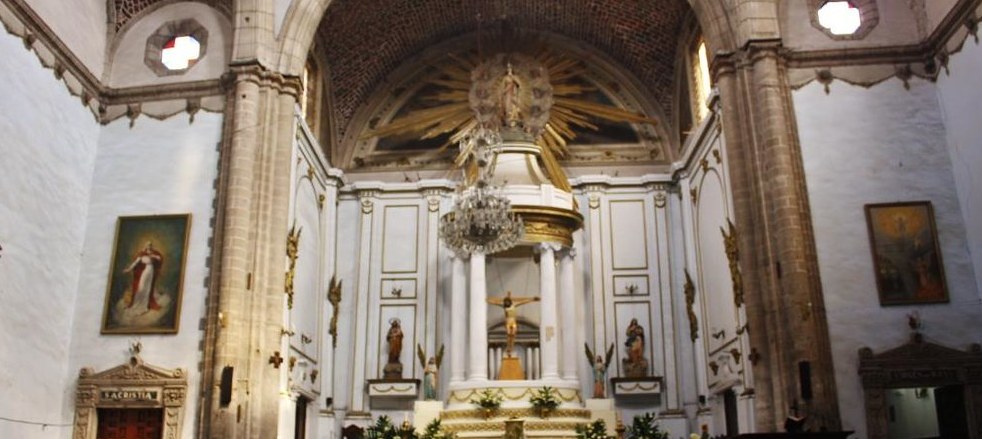
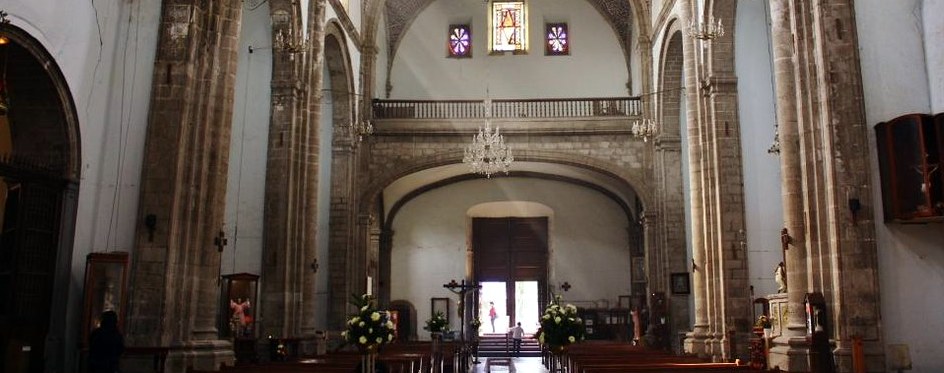
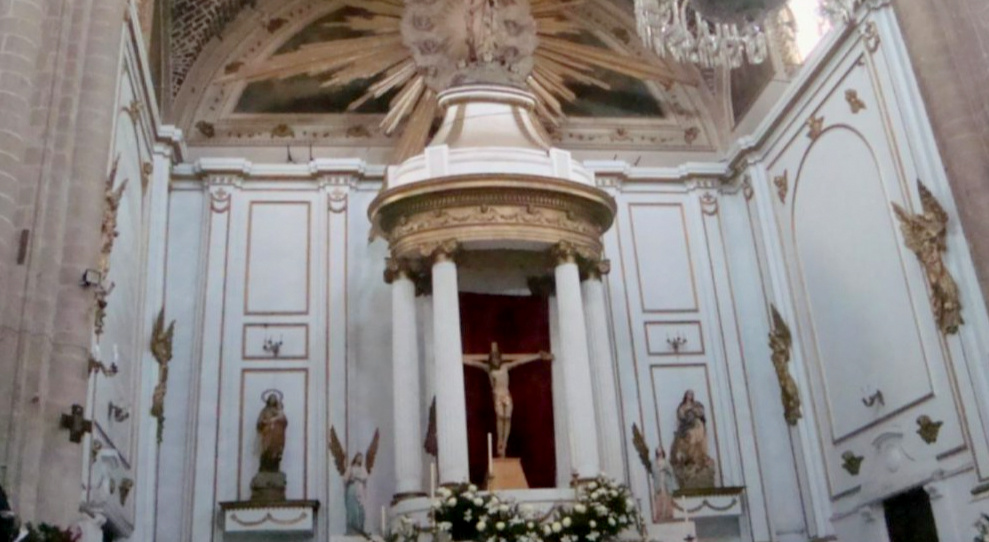
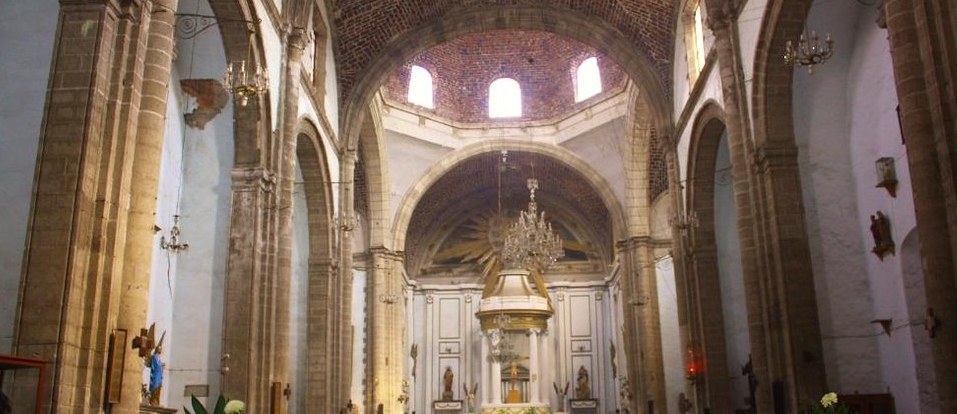
Photos: Catedrales e Iglesias/Cathedrals and Churches; Attribution 2.0 Generic
The Santa Catarina Church faces the plaza of the same name in the famous La Lagunilla neighborhood, just north of Mexico City’s Historical Center. The neighborhood is most famous today for the Sunday antiques market. In truth, multiple marketplaces keep the streets teeming most of the week.

The main parish church for the neighborhood, the Brotherhood of Santa Catarina founded the church in 1568. They’re known to have been in the neighborhood since 1537. The same brotherhood established a hospital in the east of the neighborhood, presuming the original lagoon was not yet quite dry. They dedicated a chapel here to Saint Catharine of Alexandria. Along with a cemetery, the complex is thought to have been supported in some measure by Hernán Cortés.
Historically, the church is also famous for its location at the beginning of the road to the Basilica de Guadalupe and for being directly north of the Cathedral. The Plaza de Santa Catarina, the former atrium, hosted welcome events for new viceroys. Santa Catarina was also the the patron saint of the university and so many events associated with the university occurred here too.
The much smaller chapel was upgraded to a parish church along with the Church of Santa Veracruz due to increasing need in 1568. Rebuilt on a number of occasions, the building we see today dates from the mid-18th century. The façade is mid-17th century. Simple and made entirely of tezontle and quarry, it’s one of the most striking you’ll see. The two bodies surround the portal. With paired and fluted pilasters, the niche of the second body is flanked by a pair of simple stipes. The framed chorus window has oculi on either side.
A great flood in 1629 severely damaged the church. The Virgin of Guadalupe arrived in a procession of boats to comfort the neighborhood residents. Another flood in 1640 necessitated a complete rebuilding and this lasted until 1662. Between 1691 and 1692, the renowned architect Cristóbal de Medina Vargas completed a major remodeling. Both the outstanding Baroque-style side portal and the main chapel date from this period. A 1740 renovation completed most of what we see today.
La Lagunilla can seem a crowded, even overwhelming space. The Church of Santa Catarina has been a continued source of calm and reflection even over these many centuries.
One of the first Christian constructions on the limits between Cuepopan and Atzacoalco after the Spanish conquest. It was first a hermitage built by the brotherhood of Santa Catarina virgin and martyr in 1536. The current temple dates from 1740 and was one of the most populous parishes in the area. The proximity to the Tobacco Factory made the plaza bordering the parish a food market. In the interior of its beautiful nave survives an altar to Santa Maria Egipciaca, a chapel dedicated to the Precious Blood with several funerary monuments of the XIX century and conserves as pulpit a university chair carved in the 18th century. In the main door is a niche with a 17th-century sculpture of the martyr showing the cartwheel, the sword, and the head of Emperor Magentius at his feet. This building originated the legend of "the rosary of the souls", it is one of the emblematic sites of the neighborhood of La Lagunilla.
Heart of México Walking Route: Santo Domingo - Santa Catarina
< < Palace of the Inquisition | Heart of México Route 4 > >
Proyecto “Corredor de Cultura Digital”.
Nombre de la investigación: Investigación Centro Histórico, Monumentos, Edificios y Puntos de Interés (2023)
Dirección de investigación y diseño de Rutas: Acércate al Centro A.C. Guadalupe Gómez Collada
Coordinación e investigación histórica: Fideicomiso del Centro histórico Dir. Maestra Loredana Montes
 +525555261576
+525555261576
 https://www.facebook.com/pages/Parroquia%20de%20Santa%20Catarina/733631279995443/
https://www.facebook.com/pages/Parroquia%20de%20Santa%20Catarina/733631279995443/

Nearest at 0.07 kms.

Nearest at 0.22 kms.

Nearest at 0.25 kms.
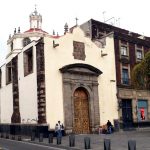
A remarkable chapel on the edge of the Plaza de Santo Domingo . . .

One of Central Mexico City's most important historic plazas . . .
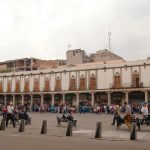
A fascinating glimpse into the very real 17th century in Mexico City.
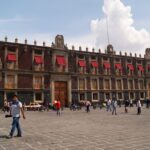
The old customs building today shows off some the SEP's extensive art collection.
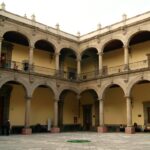
Still one of the most magnificent of center city palaces, that of the Inquisition is not one to miss.